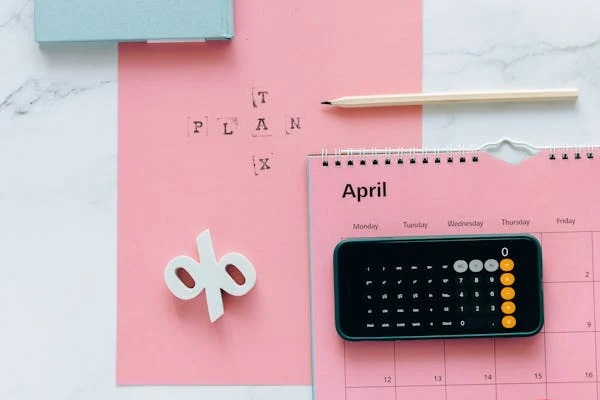The dust has settled from the UK Budget and time is running very short for households to take steps on their tax liabilities for the 2023/24 tax year, which ends on 5 April.
On 6 April, a number of new tax rates and rules come into force that will between them affect most earners, savers and investors, and which need to be heeded for those looking at their finances in the next tax year.
Henrietta Grimston, financial planning director at wealth management firm Evelyn Partners, said: “Even though the Budget was fairly light on headline tax changes there were some notable measures that come into play on 6 April, like those on national insurance and capital gains tax on property. But there are also important changes that were in the pipeline well before the Budget, like new reductions in the capital gains and dividend allowances.
“Households need to be aware of the new tax environment, because decisions they take now could leave them better or worse-off when their tax position for the 2024/25 is finally assessed. Moreover, some of the changes could mean that taxpayers incur new liabilities that mean they must complete a self-assessment tax return for the first time.”
The key changes afoot are:
1. Capital gains tax allowance is shrinking (again)
The CGT allowance was cut from £12,300 to £6,000 in April 2023, and the annual exemption will halve again on 6 April this year to just £3,000. The Treasury take from CGT has been growing rapidly: in the 2017/18 tax year CGT brought in £9.2billion but in 2022/23 this had risen 84 per cent to a record £16.9billion.
Henrietta says: “In an environment of rising asset prices and high inflation, households with investments or other assets held outside of tax wrappers need to be careful that they don’t get caught out by the narrowing CGT exemption. There are a number of tactics that are useful for minimising CGT liability, although decisions must be weighed on an investment basis, with the tax outcome just part of the equation.
“Some investors might graduate, where possible, the disposal of assets so that each year’s allowance is used efficiently. Another option could be to delay the sale, especially where the allowance is already set aside for another purpose. However, this also risks disposing of the asset on less favorable terms or in a worse tax environment. Disposal of loss-making assets can also be used to offset against a capital gain that is potentially taxable.
“If you are married or in a civil partnership, there is the potential to use two sets of capital gains exemptions. Assets can be switched to a spouse before being sold, formally known as ‘interspousal transfer’, without incurring a tax liability, and that enables a couple not just to use both CGT allowances but possibly to pay CGT at a lower rate.
“Higher and additional rate income taxpayers are subject to 20 per cent on most assets (28 per cent on residential property, reducing to 24 per cent in the next year) whereas basic rate taxpayers pay as little as 10 per cent. So even where a gain on a disposal will exceed the value of two capital gains exemptions and still generate a liability, by transferring most of the assets to whichever spouse might be a non-taxpayer or subject to a lower tax band before disposal, can potentially save a significant amount.
“Alongside the parallel cuts to the dividend allowance (see below), this brings home the importance for investors of making use of their ISA allowances as far as possible, as all gains and income within ISAs are free from tax and do not need to be declared on a tax return. Pensions offer similar tax-protection but with less flexibility over withdrawals.
“Even where ISAs and pensions are being fully maximised and someone has other assets in a taxable environment, it might make sense to use some or all of annual CGT allowances as they become available, as this can help reduce a future CGT liability quietly building up over time, often referred to as a pregnant gain.
“The annual exemption, unlike say the pension contribution allowance, is very much ‘use it or lose it’.”
2. The higher rate of capital gains tax on property is cut
Currently, CGT is applied at 28 per cent on residential property for higher rate taxpayers, but for disposals from 6 April 2024, that rate of tax will fall to 24 per cent. The basic rate for CGT on residential properties remains unaffected at 18 per cent.
Henrietta says: “The measure was intended to ‘encourage landlords and second home-owners to sell their properties, making more available for a variety of buyers including those looking to get on the housing ladder for the first time’, according to the Treasury. But it remains to be seen whether the four per cent change will achieve this desired effect.
“With the cut coming alongside the halving of the annual exemption, the benefit to those considering a property sale might be marginal. It will vary with the size of the capital gain they are sitting on.
“For a higher rate taxpayer who has the full use of their annual CGT exemption, those sitting on a gain of £24,000 or more will be slightly better off selling in the next tax year than the current one. Below this the reduction in the CGT surcharge rate for property does not offset the impact of the halving of the annual exemption.
“Above this threshold the seller would be better off to the tune of £40 for every £1,000 of gain, which might not be a game-changer for many landlords.
“For those who are looking at property as an investment beyond their main residence, the CGT rate on residential property remains four per cent higher than the rate applied to most other asset classes, meaning that property investments do need to return more in terms of capital growth to ensure post-tax returns are competitive with, say, a portfolio of equities.”
3. The dividend allowance is halving (again)
The annual allowance for dividends will be halved again for the 2024/25 tax year to just £500, having already been cut from £2,000 to £1,000 in the current tax year. The dividend allowance was £5,000 as recently as 2017/18.
Henrietta says: “Alongside the parallel CGT allowance cuts this represents something of a tax crackdown on investors, and a big change in the tax landscape for business owners. It exposes more of the income from investments that are not held in a tax wrapper to dividend tax, and as this is significantly greater for higher and additional rate taxpayers (at 33.75 per cent and 39.35 per cent respectively) than it is for basic rate (8.75 per cent), the tax warning lights should be flashing for that cohort going into the next tax year.
“That applies to business owners and partners, or shareholders in private businesses, as well as stock market investors. Those who are paid in whole or in part in dividends must balance the effect of the falling allowance against whatever tax rate benefit they get from being paid in dividends rather than salary. This equation will be further recalibrated by the second cut to National Insurance that arrives on 6 April.
“For stock and bond market investors who are exceeding their ISA allowance, it might be worth considering whether investments held largely for their income are best held in an ISA given this new restriction, particularly as it is easier to control how and when capital gains are realised. Although the potential for future growth also needs to be considered when deciding what to hold inside the ISA versus outside, given the CGT-free benefits they offer.”
4. National insurance will be cut
From 6 January 2024, the main rate of class 1 national insurance contributions deducted from employees’ wages reduced from 12 per cent to 10 per cent. From 6 April, that rate is reduced further to 8 per cent, and for the self-employed the main rate of class 4 NIC is reduced from 9 per cent to 6 per cent and class 2 NIC is no longer due.
The average employee on £35,400 will save more than £900 a year as a result of the cuts in January and April, while those on a salary greater than £50,270 – in other words, higher and additional rate taxpayers – will see their annual disposable income rise by £1,508. An average self-employed person on £28,000 is set to benefit by £650 a year, according to the Treasury.
“For higher and additional rate employees, the extra £62.83 a month in take-home pay that arrives from April is not to be sniffed at when added to the same amount that arrived with the first NI cut in January. But without wishing to ‘spoil the party’, a couple of provisos should be kept in mind.
“One, depending on one’s overall financial situation, it is often advisable to use any pay rise – as this effectively is – to boost savings, and often that could mean paying more into one’s pension. With generous tax reliefs on pension contributions still in place, this could be one of the more effective ways of using this monthly windfall, in terms of improving one’s overall financial security.
“Two, as we well know, the annual personal income tax allowance and the tax band thresholds are in the middle of a deep freeze, and in a couple of years’ time will have largely negated the gains from the NI cut in terms of the overall tax burden, though this effect will vary for taxpayers on different salaries.”
5. A real terms change: Most personal tax allowances are frozen
The Office for Budget Responsibility estimates that from this tax year 3.3 million workers will be drawn into the higher and additional rate bands by 2027/28 by the thresholds freeze.[1] Meanwhile in the same period 3.8 million will be drawn into paying basic rate tax, having previously not paid tax at all.
Henrietta says: “That means 7.1 million earners face a tax rise by 2028, with this effect at its greatest right now and in the next year as salary increases are running quite high at the moment.[2]
“Together with some marginal anomalies in the tax rate, notably the one that means those who earn more than £100,000 pay a 60 per cent marginal rate due to the withdrawal of the personal allowance, this can prove disheartening for some workers.
“Options for mitigating income tax liability are limited but the one that is open to almost everyone is pension contributions, which through tax relief allow the saver to keep more of their earned income – albeit at the cost of sacrificing access to those funds until pension access age (now 55, rising to 57 in 2028).
“Like ISAs, money inside pensions grows free of income tax and capital gains tax. This coupled with tax relief on contributions at the marginal rate makes saving into pensions a really attractive option – particularly for higher and additional rate taxpayers – so long as you are happy with the restrictions on access.
“Those in salary sacrifice schemes benefit from two other possible tax-reducing effects. One, they receive relief on National Insurance contributions to add to income tax relief – and possibly also a bonus from the employer’s NI savings. Two, those just above a tax threshold could potentially drop a tax band by reducing their notional salary in this way. Many firms running such schemes now set salary-related benefits based on one’s original salary, so these are not compromised.
“Pension tax relief shouldn’t be taken for granted, as it is a benefit that has come under scrutiny in the past and could again in the future. At a time of stretched public finances, and under a new government, relief at the higher and additional rates could become vulnerable to a Treasury hunt for revenue.
“Finally, those drawing the state pension can expect an 8.5% boost to their payout come 6 April (to £11,502 in case of the full new flat rate SP), which will be very welcome, but could also push some recipients into paying tax, or into a higher tax threshold.”
6. Pension taxation overhaul becomes law
From 6 April, the abolition of the pensions Lifetime Allowance and the increases to the Annual Allowances pass into law when the Finance Bill is enacted.
Henrietta says: “Jeremy Hunt’s removal of Lifetime Allowance tax charges at the 2023 spring Budget was unexpected but largely welcomed. The detail has taken a while for the authorities to clarify, and for advisers to fully pick apart, and as the measures become law some of the complexities – particular for those who have already accessed pension benefits, or who had protection in place – are such that expert financial advice in this area is pretty much essential.
“Savers have also been unnerved by Labour’s objection to the measure and uncertainty over whether it could be reversed in some way by a future government.
“However, for many of those in the saving (or ‘accumulation’) stage, as the LTA abolition becomes law, there is an opportunity to boost their pot – if it makes sense for their overall financial position – above the old £1,073,100 LTA. Some savers are rejoining workplace pension schemes to take advantage of employer contributions again.
“This is especially relevant where protection was held. Those who had ceased contributions for fear of breaching their protection can now in theory resume contributions. However, the benefit of these rule changes are greater for some, depending on their levels of earnings, and advice should be sought before recommencing contributions for those with pension protection.
“It would be unprecedented for any future change to the pension taxation rules to be introduced without offering any recourse for savers who had made legitimate decisions under current rules, but savers should understand the implications of taking advantage of the new rules, especially for those with pension protection.
“The scope to build pension pots has been further boosted by the increase in the annual allowance to £60,000 from £40,000 – although the highest earners are still restricted by the tapered annual allowance, albeit at a raised floor of £10,000 a year, up from £4,000 in 2022/23. Likewise, the increase of the money purchase annual allowance from £4,000 to £10,000 could mean that if you have already drawn flexibly on your pension but want to return to work and rebuild pension savings.
“Finally, defined contribution or money purchase pension pots are treated favourably by inheritance tax rules, making them a very tax-efficient way of passing on wealth at death, which is becoming more salient as the long-term freeze of the nil-rate band allowance persists.”





